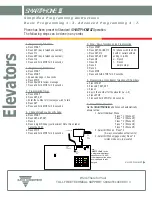
Chapter 1 An Overview of the Cisco Unified IP Phone
What Networking Protocols Are Used?
1-4
Cisco Unified SIP Phone 3911 Administration Guide for Cisco Unified Communications Manager
OL-14029-01
Table 1-1
Supported Networking Protocols on the Cisco Unified IP Phone
Networking Protocol
Purpose
Usage Notes
Cisco Discovery
Protocol (CDP)
CDP is a device-discovery protocol
that runs on all Cisco-manufactured
equipment.
Using CDP, a device can advertise its
existence to other devices and receive
information about other devices in
the network.
The Cisco Unified IP Phone uses
CDP to communicate information
such as auxiliary VLAN ID, per port
power management details, and
Quality of Service (QoS) configuration
information with the Cisco Catalyst
switch.
Dynamic Host
Configuration Protocol
(DHCP)
DHCP dynamically allocates and
assigns an IP address to network
devices.
DHCP enables you to connect an IP
phone into the network and have it
become operational without you
needing to manually assign an IP
address or configure additional
required network parameters.
DHCP is enabled by default. If
disabled, you must manually
configure the IP address, subnet
mask, gateway, and a TFTP server on
each phone locally.
Cisco recommends that you use
DHCP custom option 150. With this
method, you configure the TFTP
server IP address as the option value.
For additional supported DCHP
configurations, refer
Cisco Unified
Communications Manager System
Guide
.
Hypertext Transfer
Protocol (HTTP)
HTTP is the standard way of
transferring information and moving
documents across the Internet and the
web.
Cisco Unified SIP Phone 3911
supports HTTP.
Summary of Contents for 3911
Page 4: ......
















































